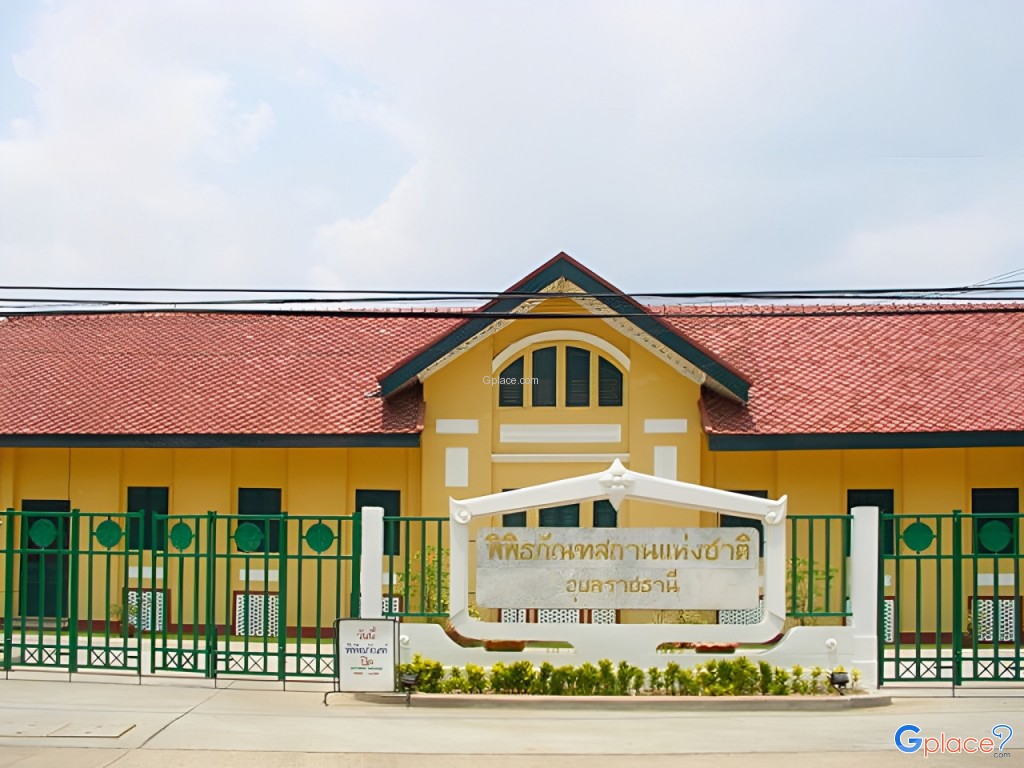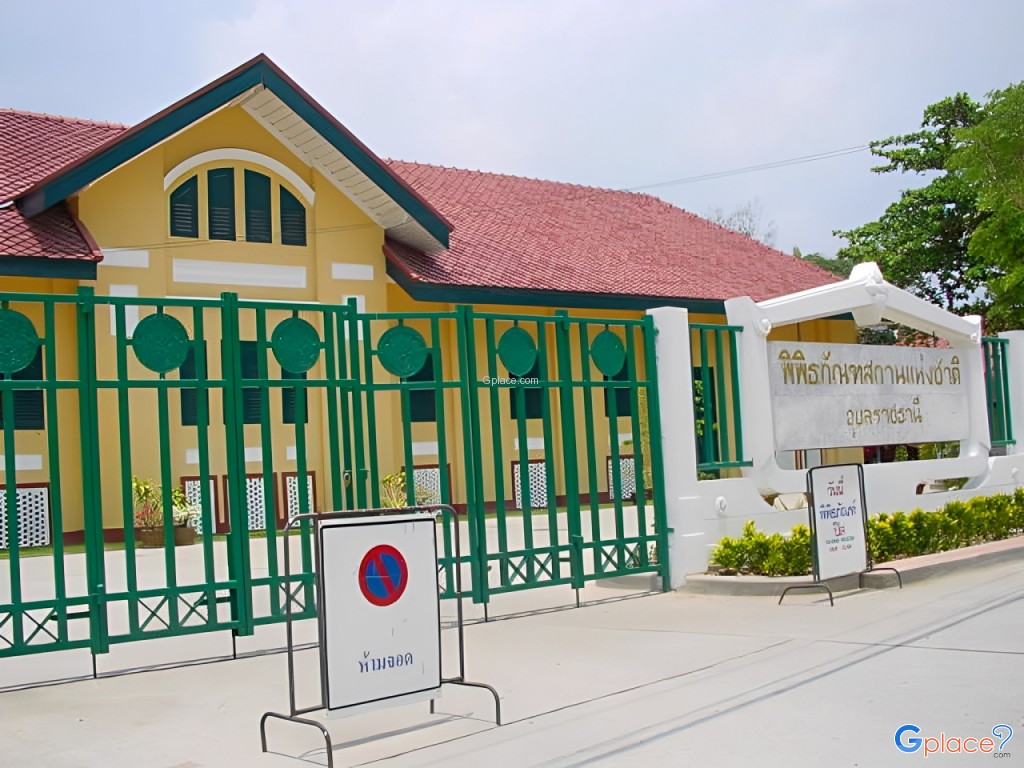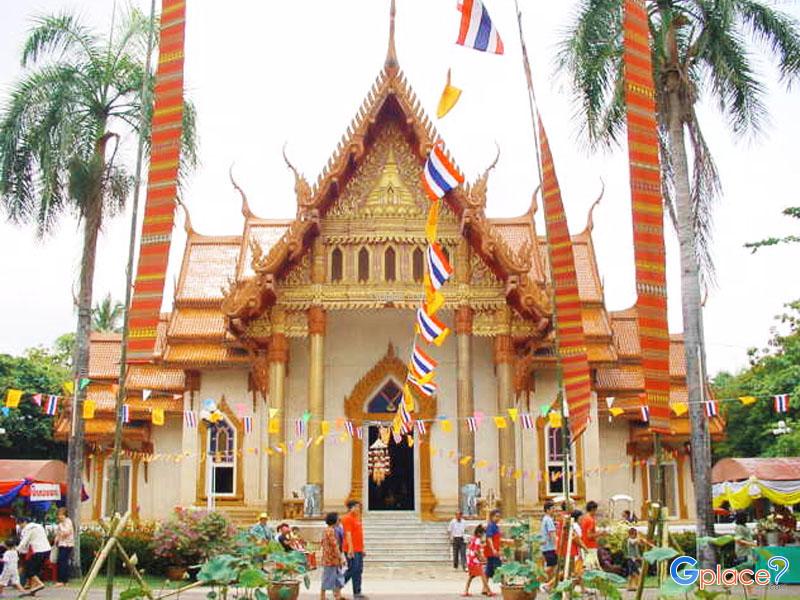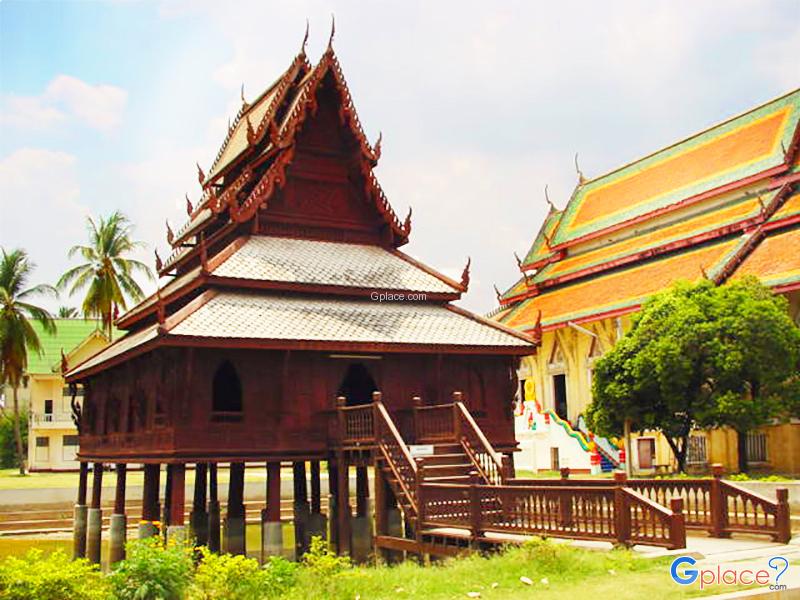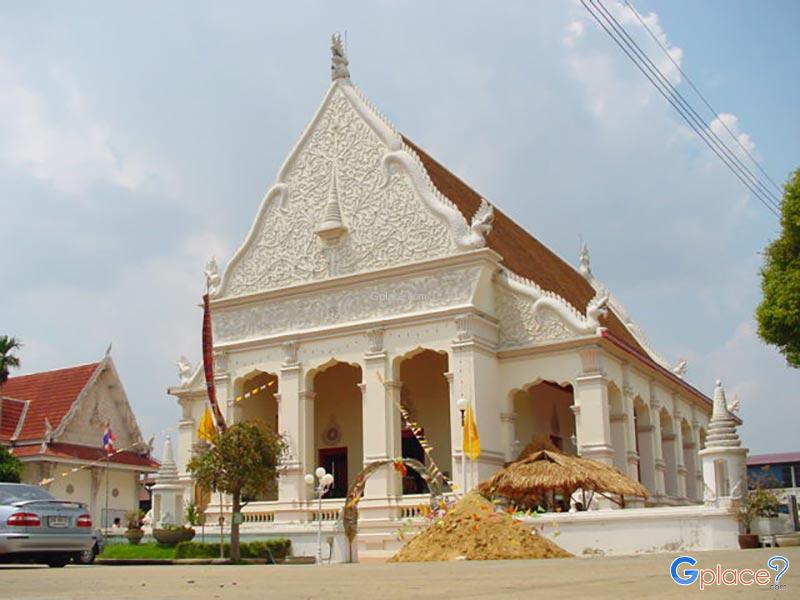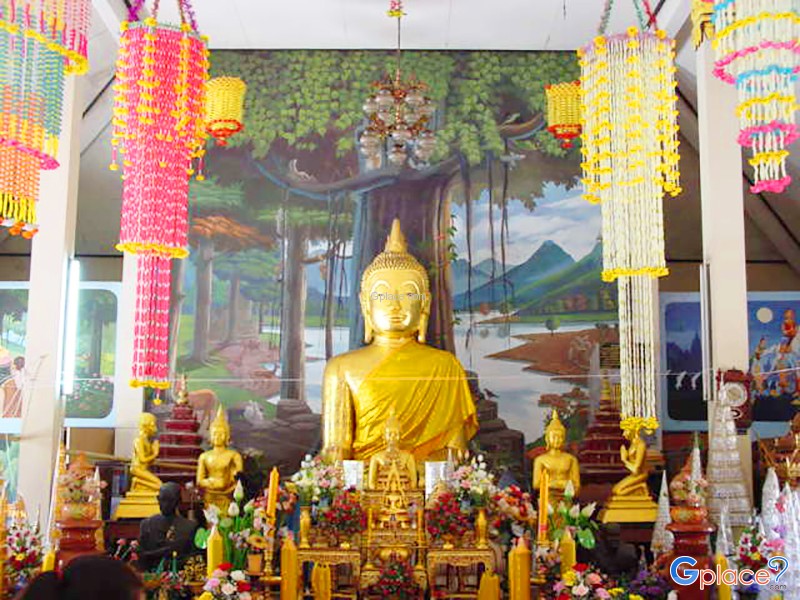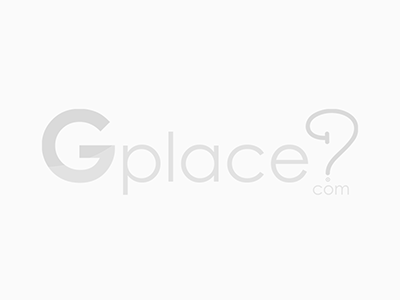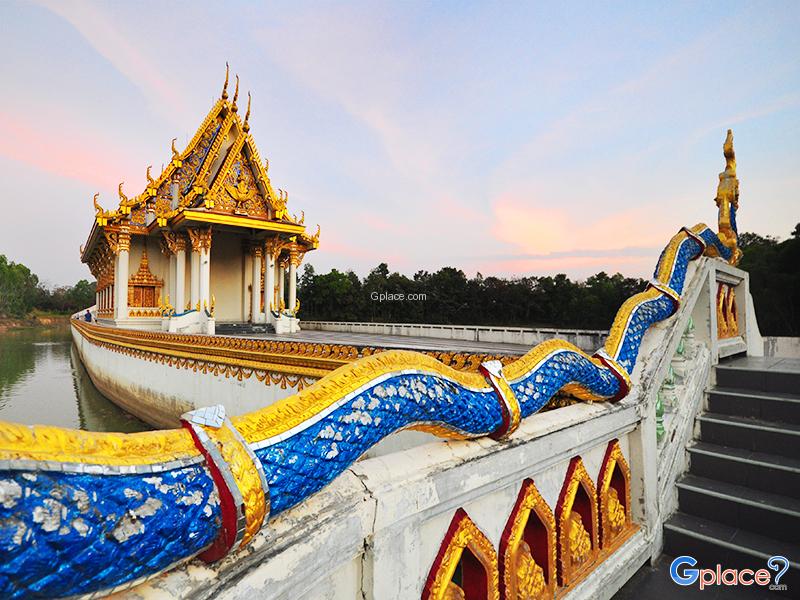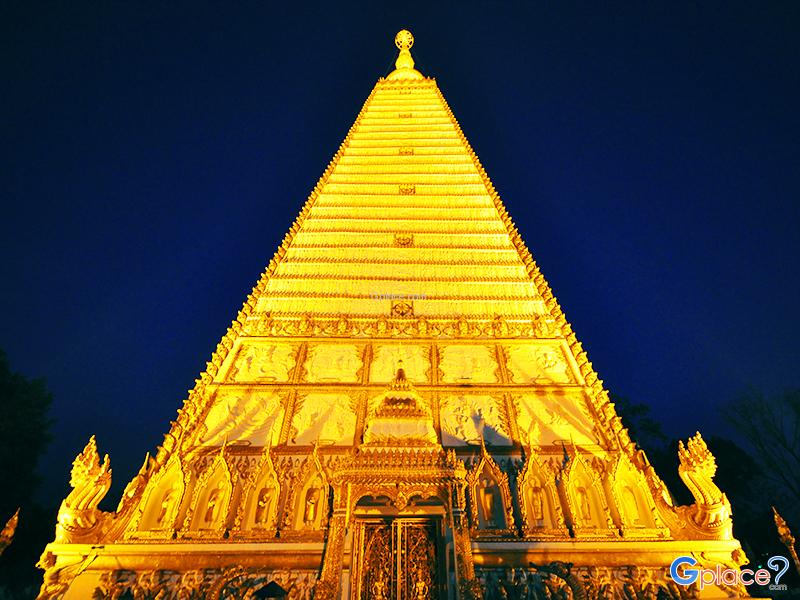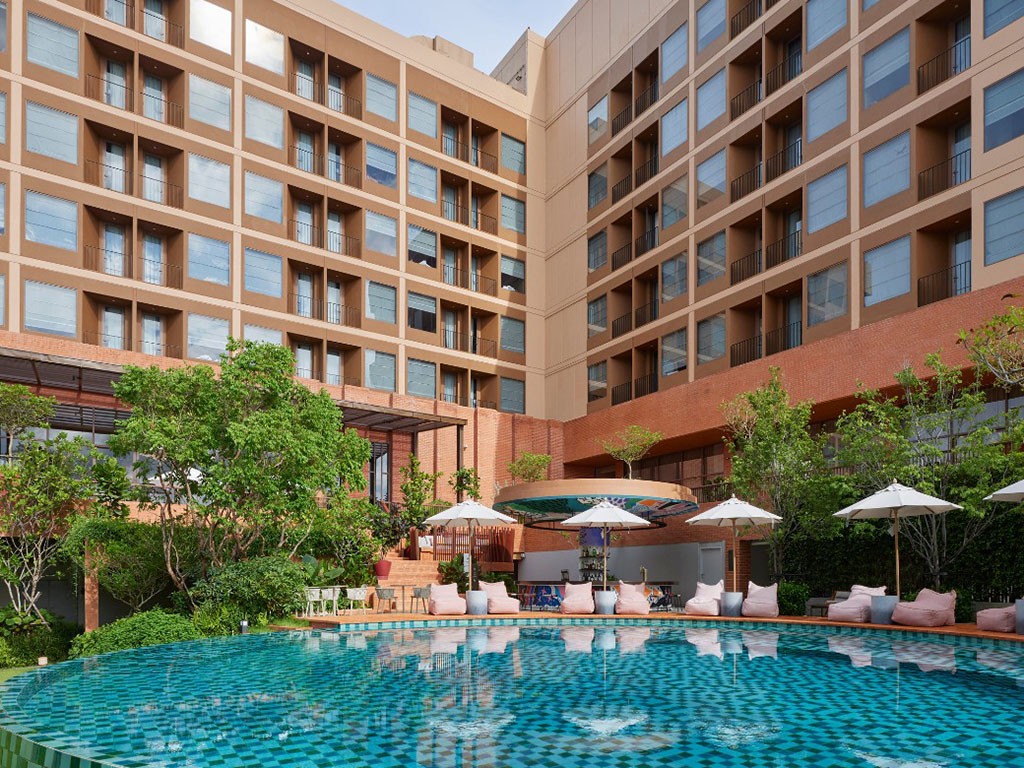“Originally the provincial hall, this historic building has been restored and converted into a national museum. It displays the province’s geography, history, and cultural heritage through permanent exhibitions.”
Ubon Ratchathani National Museum is located at the intersection of Khuean Thani Road and Upparat Road. It is a single-story elevated building made of brick and plaster, originally constructed in 1918 to serve as the provincial hall. Later, the building was handed over to the Fine Arts Department to be converted into a national museum. The land was donated by the descendants of Prince Sapphasitthiprasong for public use as a government facility.
The building has a rectangular layout facing north with a hip roof. Inside, there is a central exhibition hall surrounded by corridors and smaller rooms. Decorative wooden floral carvings adorn the doorframes and eaves. As the city grew, a new provincial hall was built to the west of Thung Si Mueang in 1968, and this former hall was then used by various government offices.
In 1983, Governor Bunchuai Srisarakham officially handed the old building over to the Fine Arts Department for restoration and conversion into a national museum. After renovations and the installation of permanent exhibitions, the museum was officially opened on June 30, 1989, by Her Royal Highness Princess Maha Chakri Sirindhorn.
The museum was established to serve as a local center for study, conservation, and promotion of cultural heritage. Its permanent exhibitions focus on various aspects of Ubon Ratchathani, including geography, geology, prehistory, history, archaeology, local arts, and ethnology. The exhibitions are organized into ten rooms:
Room 1: General Information about Ubon Ratchathani
Room 2: Geography and Geology of Northeastern Thailand
Room 3: Prehistoric Period
Room 4: Early Historical Period, Dvaravati and Chenla Cultures (12th–15th Buddhist centuries)
Room 5: Khmer Culture during the Angkor Period (15th–18th Buddhist centuries)
Room 6: Thai-Lao Culture (23rd–25th Buddhist centuries)
Room 7: Ancient and Local Textiles of Ubon Ratchathani
Room 8: Traditional Music
Room 9: Folk Crafts and Household Utensils
Room 10: Local Governance and Buddhist Artworks
How to Get There
-
By private car via Khuean Thani Road or Upparat Road
-
By public bus passing through Ubon Ratchathani city, get off near Thung Si Mueang
-
By local taxi or songthaew within the city
Travel Tips
-
Bring a guidebook or join a tour for better understanding of the exhibits
-
Ideal for students, researchers, and those interested in local history and culture
-
Ask staff before taking photos to ensure it’s permitted
Opening Days and Hours
• Open Wednesday to Sunday
• Hours: 09:00 AM – 04:00 PM
• Closed on Monday and Tuesday
Admission Fees
• Thai nationals: 20 Baht
• Foreigners: 100 Baht


















